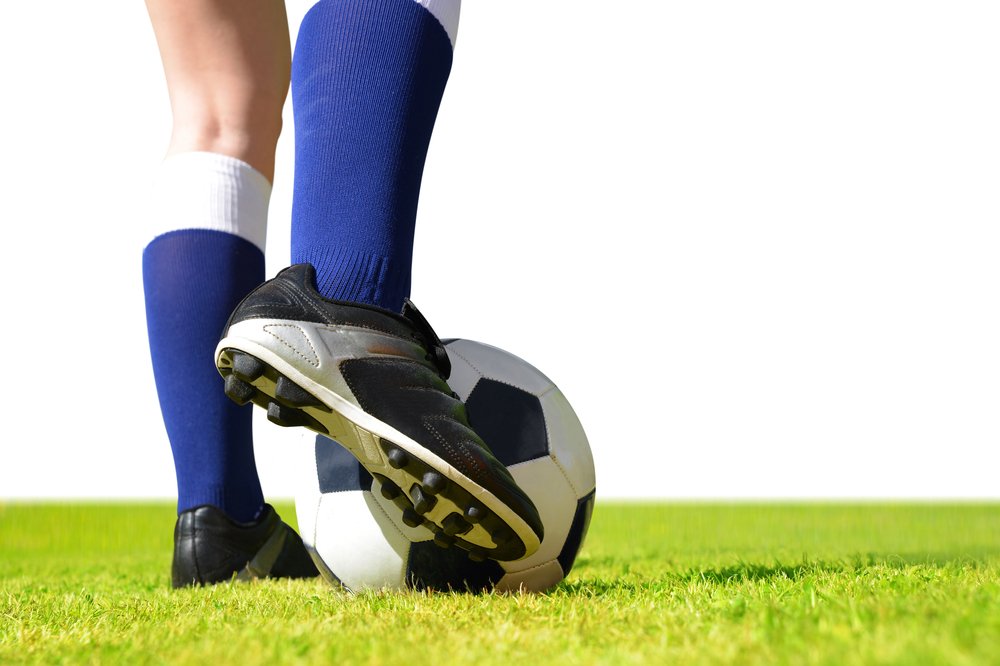What Is Turf Toe ?
Turf toe is a common sports injury that affects pro-athletes and hobbyists alike. It happens due to a sprain of the soft tissue surrounding the main joint of the big toe.
There are two joints in the big toe – one closer to the end of the toe, and one where the base of the toe connects to the foot. The joint at the base of the toe is called the metatarsal joint, and it is surrounded by tendons, two round bones under the joint and ligaments which connect it to the foot. These tendons and ligaments are called the ‘plantar complex’. When these soft tissues are injured, it is referred to as turf toe.
What Does Turf Toe Look Like?
The severity of turf toe can vary greatly, and different severities will present different symptoms. The injury is typically graded on a scale of 1-3:
Grade 1
The soft tissue surrounding the metatarsal joint has been stretched, but not torn. The area is tender, especially to the touch, and may show some slight swelling.
Grade 2
There is a partial tear to the soft tissue. Symptoms include moderate swelling, bruising, and pain. Movement of the toe is likely painful and restricted.
Grade 3
There is a complete tear in the plantar complex. The joint may be dislocated or fractured. Symptoms include severe pain, swelling, and bruising. Moving the toe is likely very difficult and painful.
If the turf toe is caused by repetitive strain to the area, symptoms will develop slowly and steadily, worsening with repeated usage. However, more commonly the injury occurs due to sudden force. This will result in immediate pain, which typically worsens over a 24-hour period.
What Causes Turf Toe?
Turf toe is caused when the big toe is hyperextended, or bent too far. This might happen when making a quick stop or turn while running, or when taking off for a sprint. The term ‘turf toe’ actually arises from the artificial turf used for sports. This ground is harder than grass and provides less shock absorption, increasing the risk of a strain.
However, “Turf Toe” may occur from overuse, a sudden hyperextension of the foot, misplacement of the foot, or from an existing injury. Many athletes wear lightweight and flexible shoes to give them more agility on the field. This footwear provides minimal support to the toes, and can make it easier for them to hyperextend.
How is Turf Toe Treated?
Treatment for turf toe depends on the severity of the strain, and the specific ligaments or bones which are implicated in the injury. Full recovery can take anywhere from one week to six months depending on the severity of the injury and early intervention normally allows a faster recovery.
Mild Cases
Self-treated. (R.I.C.E) rest, ice, compression, and elevation. Ice the area for 20 minutes at a time, several times a day.
Stop aggravating activities.
Compression bandages can prevent additional swelling.
Over the counter pain medication can also help with managing the injury.
However, if symptoms persist or the injury wasn’t minor, it is important to see your podiatrist or health care professional.
Mild to Moderate Cases
Strapping.
Continuation RICE.
Compression bandages.
Footwear modifications.
Walking Boot – Moon Boot.
When the immobilisation is no longer required, it’s important to seek physical therapy to ensure that the joint fully recovers range of motion and strength. This not only helps the toe to recovery, but helps to prevent re-injury to the same area. Orthotic shoe inserts can also help in both recovery and prevention of turf toe.
Severe Cases
For more severe cases, immobilisation of the joint will likely be required for a longer time.
Further investigations may be required to include ultrasounds to investigate soft tissue trauma such as flexor plate pathology and MRI’s to investigate pathologies as sesamoiditis.
Ultrasound guided cortisone injections may be required.
On occasions surgery may be required if all conservative management has been exhausted.
Where Can I Go to Get Treated?
The Perth Podiatrists provide injury management and prevention for turf toe. Our qualified team is highly experienced with treating sports injuries, so if you’re experiencing turf toe don’t wait – get it treated immediately.
Prevention is always better than treatment, and we provide a range of stretching and strengthening techniques to help prevent turf toe. We also have a range of footwear and orthotic solutions to protect your toes during sport.
Don’t let sport injuries derail your goals. Book an appointment online with our team and get back to doing what you love.

